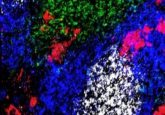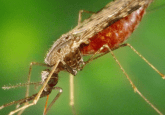How malaria is foiling vaccine research with ‘Ctrl+c, Ctrl+v’

Researchers have developed a novel approach to analyzing malaria parasite genomes to reveal how antigenic variation arises.
Researchers at the European Molecular Biology Laboratory’s European Bioinformatics Institute (EMBL-EBI; Cambridge, UK) have recently identified a ‘copy-paste’ mechanism as key to driving genetic diversity in certain antigenic proteins encoded by malaria parasites. This was achieved through the development of novel analytical approaches to effectively compare regions of parasite genomes with low sequence similarity. It is hoped that a greater understanding of how genetic diversity arises among these antigens will aid in the development of new approaches to vaccine development.
Plasmodium falciparum (P. falciparum) is an apicomplexan parasite responsible for most malarial infections in humans. The development of reliable preventative vaccinations against P. falciparum has been confounded by the antigenic variability displayed by the parasite at many stages of its complex and branching life cycle. A key opportunity for medical intervention in P. falciparum infection is when parasites are in their merozoite stage. Having burst from an infected red blood cell or hepatocyte, these merozoites are briefly exposed to the serum, before subsequently invading a healthy red blood cell and internalizing.
DBLMSP and DBLMSP2 are two merozoite surface proteins (MSPs) encoded by adjacent and paralogous genes in a tandem array, which exhibit striking diversity between P. falciparum lineages. Understanding how this diversity arises is important in developing therapeutics targeting these MSPs, and similar proteins, moving forward.
 Novel insights into the role of lncRNA in malaria
Novel insights into the role of lncRNA in malaria
A newly revealed role of lncRNAs in the deadly malaria parasite, Plasmodium falciparum, has opened new avenues for targeted therapeutic strategies.
Previous attempts to analyze the genetic diversity of DBLMSP and DBLMSP2 have fallen short due to the reliance on one reference genome. This approach is less effective for regions that exhibit a high degree of sequence divergence, as these regions fail to align satisfactorily. In this study, researchers employed genome graphs to generate an ensemble reference, which is more representative of the inherent variation between individuals within a species, to compare divergent DBLMSP and DBLMSP2 alleles between parasite lineages.
This approach was able to identify the Duffy binding-like (DBL) domain as highly variable between parasite lineages in both DBLMSP and DBLMSP2. The genes encoding both these proteins were found to contain two divergent DBL lineages. One of these lineages in both genes was shared between both DBLMSP and DBLMSP2 genes. The presence of one shared and one ‘private’ DBL lineage in each paralog is indicative of non-allelic genomic conversion, in which this region has been ‘copied’ and ‘pasted’ from one paralog to the other.
Identifying the drivers of antigenic variation within P. falciparum is key to understanding how it successfully infects hosts. “This data not only enhances our grasp of malaria’s biology but also will be valuable to researchers across the world studying these genes and their interaction with our immune system.” Elaborates Zamin Iqbal, group leader at EMBL-EBI. Broadening this understanding will be key in developing the next generation of effective malaria vaccinations.





